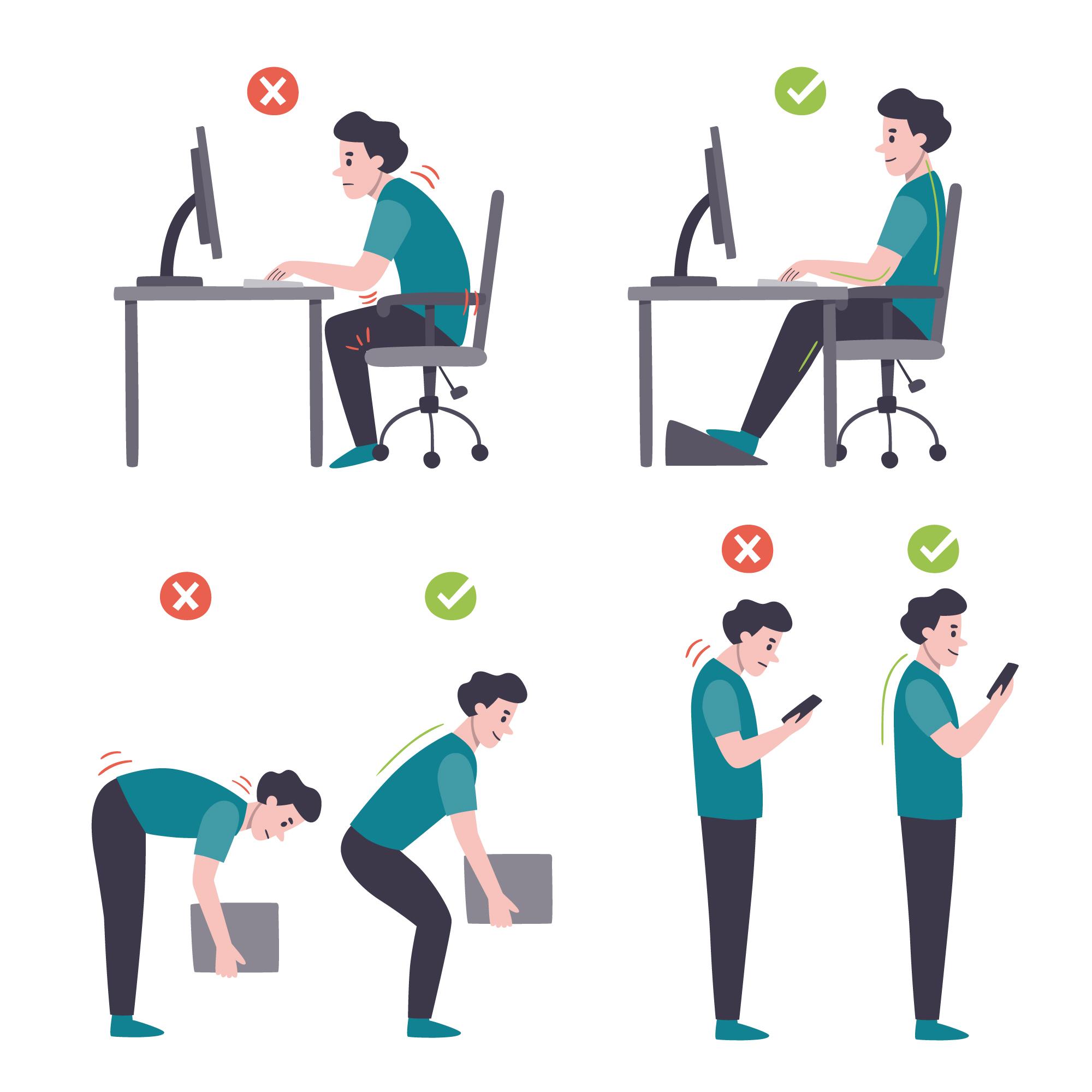
Cervical Spondylosis in the Workplace: Ergonomic Solutions and Adaptations
Working with cervical spondylosis can be challenging, but there are ergonomic solutions and adaptations that can help alleviate discomfort and improve productivity. In this blog, we’ll explore some simple yet effective strategies for creating a more neck-friendly work environment.
Understanding Cervical Spondylosis
Cervical spondylosis is a condition that affects the neck, causing pain, stiffness, and discomfort. It occurs when the discs and joints in the neck degenerate over time due to wear and tear.
Ergonomic Solutions for the Workplace
- Adjust Your Workstation: Ensure that your workstation is set up ergonomically to reduce strain on your neck. Position your computer monitor at eye level to avoid looking down or tilting your head forward. Use an adjustable chair with good lumbar support to maintain proper posture and support your lower back.
- Use Ergonomic Accessories: Invest in ergonomic accessories such as a supportive keyboard and mouse, a wrist rest, and a footrest if necessary. These accessories can help reduce strain on your neck and shoulders and improve overall comfort while working.
- Take Regular Breaks: Avoid sitting or standing in the same position for extended periods. Take regular breaks to stretch and move around, allowing your neck and shoulders to relax and reduce stiffness. Set reminders to take breaks throughout the day and incorporate simple neck exercises into your routine.
- Practice Proper Posture: Be mindful of your posture while working. Sit up straight with your shoulders relaxed and your chin tucked in. Avoid slouching or hunching forward, as this can put extra strain on your neck and exacerbate cervical spondylosis symptoms.
Adaptations for Specific Job Roles
- Desk Jobs: If you have a desk job, consider using a standing desk or a convertible desk that allows you to alternate between sitting and standing throughout the day. This can help reduce pressure on your neck and improve circulation.
- Manual Labor: If your job involves heavy lifting or repetitive movements, take precautions to protect your neck. Use proper lifting techniques, take breaks to rest and stretch, and use assistive devices or tools whenever possible to reduce strain on your neck muscles.
Conclusion
By implementing ergonomic solutions and adaptations in the workplace, you can create a more neck-friendly environment and reduce the risk of exacerbating cervical spondylosis symptoms. It’s essential to listen to your body, take breaks when needed, and advocate for yourself to ensure a comfortable and productive work experience.
To seek medical advice, always consult a Doctor. Here are our recommended experts. Click Here
To read more on Cervical Spondylosis. Click Here


